The consoles of the early millennium were amazing powerhouses compared to every previous generation. An increase in media storage capacity, improved graphics, sound and memory meant that the new generation of games could be more immersive than ever before. It was up to developers to entertain their audiences while also providing a suitable challenge. The game players of the '80s and '90s had grown up and expected some more refinement in their titles. They wanted new and unique experiences and did not enjoy playing the same title over and over. In essence they wanted an experience that lasted much longer than the average arcade game. Even the other console hits, like the Mario Bros. and the Legend of Zelda had to adapt with the times.
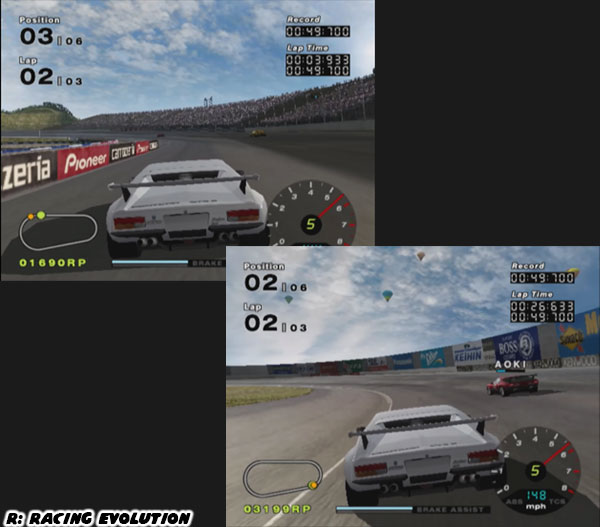
Ridge Racer V was a solid racing game but if left audiences wanting. Namco rethought their approach and created a game that pulled many elements from Ridge Racer Type 4 as well as other contemporary hits. It took the studio several years to release a new title. In that time millions of dollars and thousands of work hours were spent in development. The end result was R: Racing Evolution. The 2003 sleeper that was released on the Nintendo GameCube, Microsoft Xbox and Playstation 2. It was a game that the studio meant to be the spiritual successor to the Ridge Racer series. They began by breaking from tradition. It was the first game in Ridge continuity that featured real world production cars and race cars. It was not however the first Namco racing game to use real world sports cars.
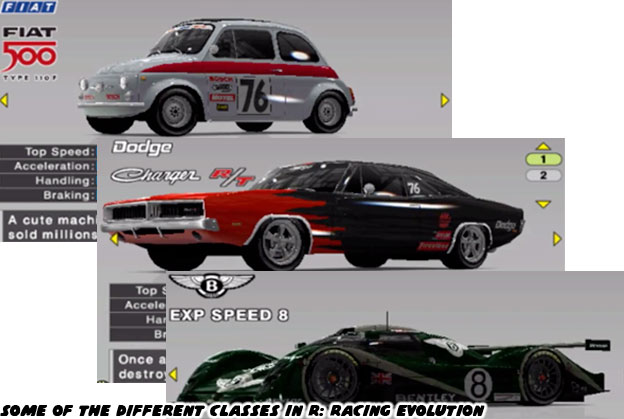
A few years prior, in 2001 to be exact, the studio had released the arcade game Wangan Midnight. It was based on the popular manga series that revolved around a group of street racers. Like the Megalopolis Expressway films from the '80s, Wangan Midnight helped inspire the original Ridge Racer game. It was a series that started in 1990, predating the wildly popular Initial D by 5 years. In it the main character, Akio Asakura, drove a custom Fairlady Z that was dubbed the "Devil Z." The impossibly fast and incredibly hard to control Devil Z undoubtedly planted the seeds for the Devil 13 in Ridge Racer. The cars in the comic and game were based on real tuned cars from Nissan, Porsche, Toyota and Mazda. Namco needed to secure a license from several manufacturers in order to make the game true to the comic. Since the company was working on their proprietary arcade hardware they were able to adapt the game and eventually series of games for the PS2 and PS3 easily. The work with the cars and licenses in Wangan Midnight got the Ridge Racer Project team working on something more ambitious.
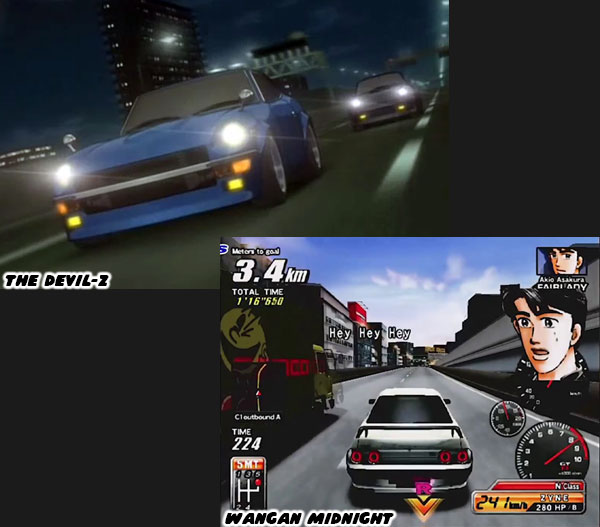
R: Racing Evolution featured racing in multiple different classes. Granted in Ridge Racer there were classes as well however some of them, like the Duel class, were fictional. From the muscle cars in the Drag Racing category to the four wheel drive beasts in the Rally class, as well as the GT Production and Prototype classes, everything in R: Racing Evolution was grounded in reality. The cars handled believable, they responded fairly accurately and had the sights, details and sounds to help put the players in the moment. The game ran the spectrum of the biggest racing types, ensuring that fans in the US, Japan, the UK and Europe would find something they could identify with.
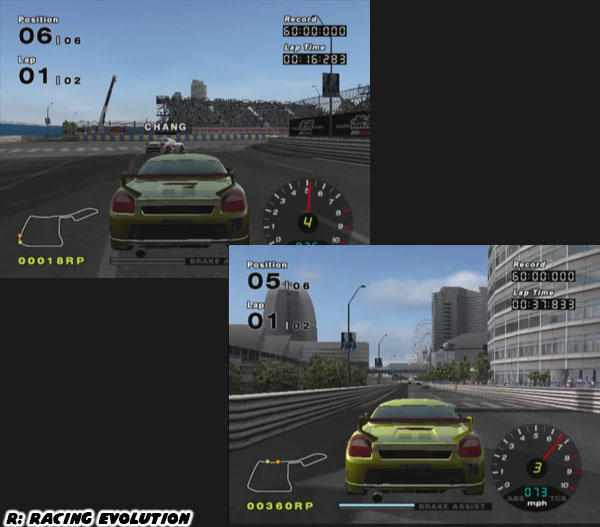
The most famous manufacturers were represented along with a handful of lesser known (to the US) auto companies. It was much more of a racing sim experience than audiences had ever expected from Namco. The studio was taking a break from the arcade experience to see if they could capture the fans of titles like Gran Turismo on the Playstation and Project Gotham Racing on the Xbox. Where they really surprised audiences was in the story-based "Racing Life" mode. The game revolved around two female drivers. A seasoned professional named Gina Cavalli and a young rookie named Rena Hayami.
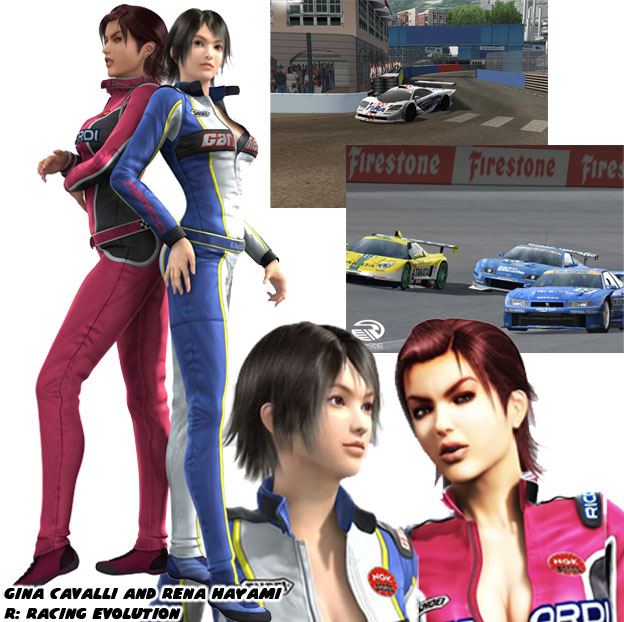
Players took on the role of Rena and were made to see Gina as a not-too-friendly rival. In fact from the very onset the cattiness between the two was played up for the sake of drama. It seemed a little bit much at the beginning of the game, making the characters appear one-dimensional. The whole story would reveal itself one chapter at a time, highlighted by different races and different classes of cars. Every character introduced would become more well rounded by the end of the game. These characters could be fearful, dubious or arrogant depending on the situation. By providing a decent script and a range of emotions for the animators to work with the characters came to life. In this way players would learn to empathize with them and have a greater understanding and appreciation of race culture.
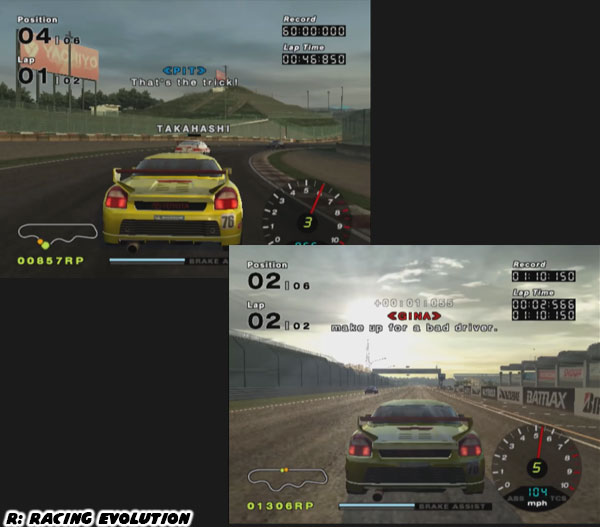
Namco had taken a page out of their Ridge Racer Type 4 playbook. It was only natural that they followed what worked previously. Ridge Racer V could be interpreted as a "do over" like Rage Racer was on the original Playstation and Namco needed to really step up their efforts in the next release. The studio did change some things around. Instead of speaking to the player in second-person and having them choose between four sponsors and four manufacturers the studio focused on the most important storytelling elements. They put audiences on one team that was as fleshed out as those in R4. This team had a back story, a history that would be revealed from the different characters in the game. The team captain, a seasoned veteran named Stephan Garnier would speak to them directly and in some cases have a navigator / crew chief named Eddie talk to them during a race. All the while players got to experience the different classes of racing, different manufacturers and sponsor cars as well. The developers then created an avatar for players to assume the role of to help place themselves in the context of the story. That character was not the Michelin Man, although his cameo was a high point in the Racing Life mode.
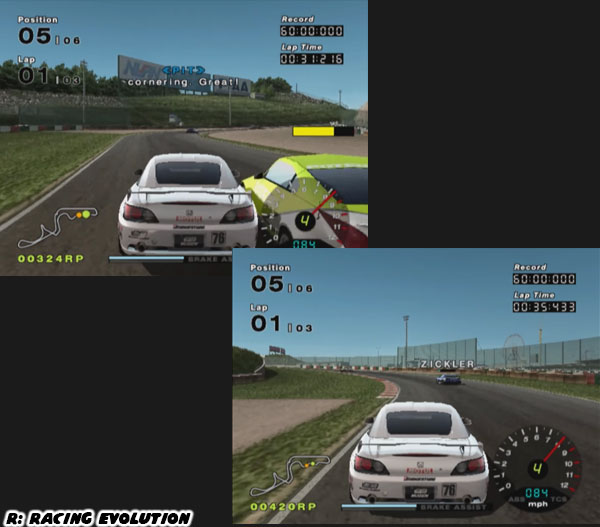
Namco had good reason to create a unique protagonist specifically for the game. It seemed as if the most successful titles in Japan and the US revolved around a human character. Even in the most elaborate science fiction, fantasy or historical period just about every AAA blockbuster had a human character for audiences to play as and identify with. It was true in Metal Gear, God of War and Assassins Creed titles. The stars of those games had a very deep back story and a very rich supporting cast. Audiences were expected to enjoy the gaming experience but they were also expected to empathize with the characters and become emotionally invested in the plot.
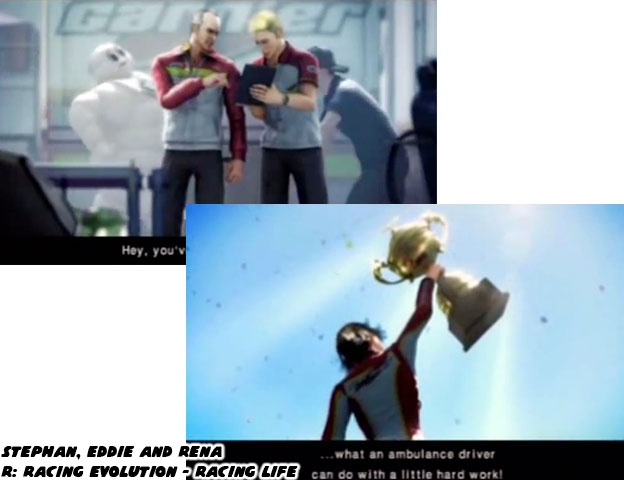
Namco had planned for R: Racing Evolution to become a blockbuster hit by learning from their contemporaries in other genres. Few racing games have had a story as interesting as the one they had developed. Few racing games ran the gamut of classes and car types with a solid sense of realism. Namco did a good job at marrying the two for a whole new console generation. The publisher wanted Rena, Gina and Stephan to become icons in the world of racing games. They had planned for them to become mascots, as well recognized as the heroes from other genres, yet that did not come to pass. There were a number of missteps that prevented the vision from becoming a reality. The next blog will cover some of the lessons learned from this title.
As always if you would like to sponsor me
please visit my Patreon page and consider donating each month, even as little as $1 would help make better blogs and even podcasts!
















Ah yes Car pg, be anonymous and gain experience (and cars!) in Forza Horizon, or use the levels to show your progress in the racing titles GT and Forza MS. I know TOCA 2 (ps2) did the you're the driver with managers and people talking to 'you'.
ReplyDelete